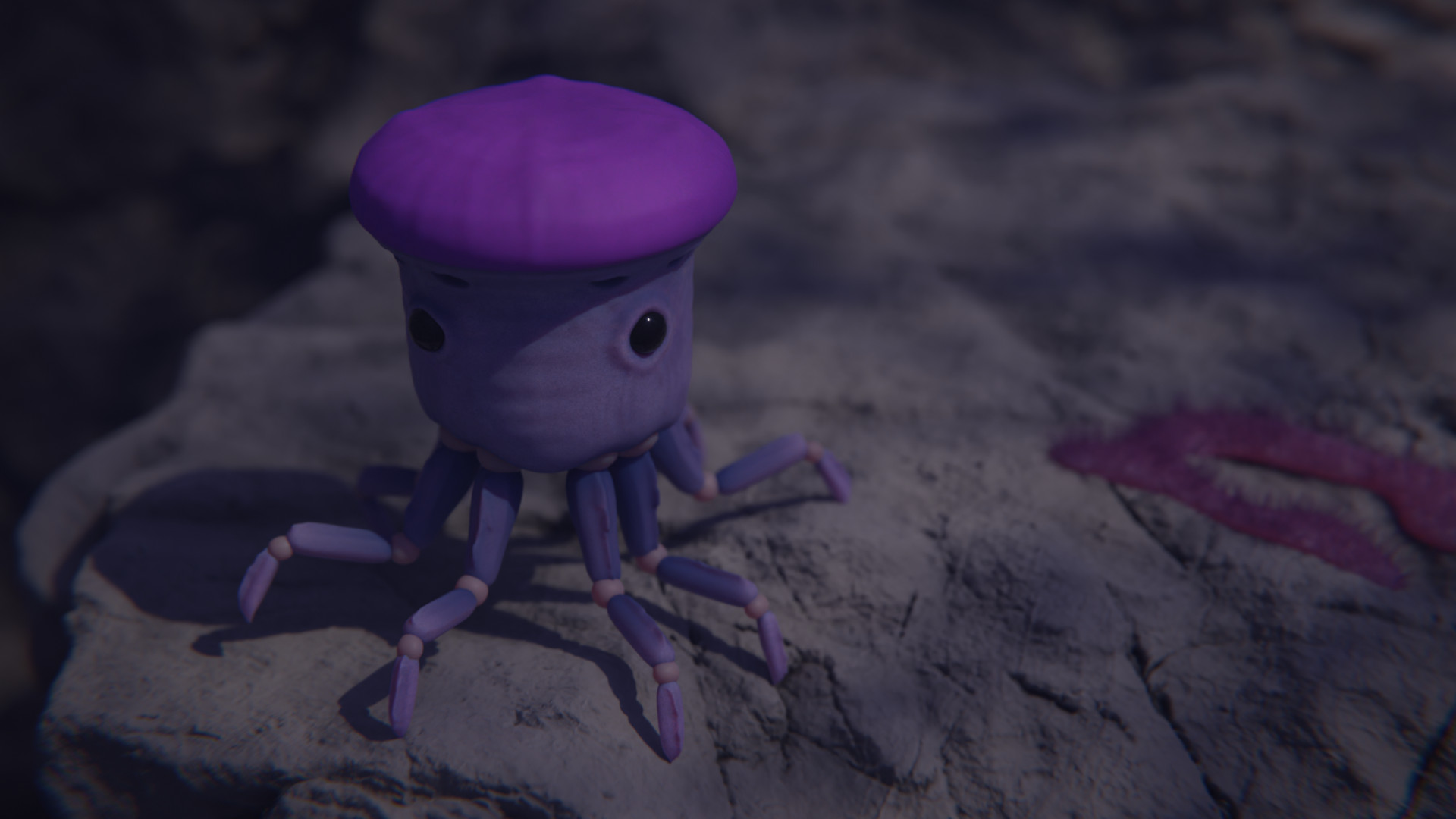Armor Globe
Descended from basal filter globes, the armor globe had adapted to deal with large radiation of predators caused by the gaps left by the end of the first mass extinction on Almaishah. The Armor Globe became a generalist omnivore that lived in shallow waters. It is covered in a thick armored exoskeleton.This adaptation has hampered the Armor Globes ability to swim and to compensate it lived among the purple plant life to camouflage itself. Pictured here an armor globe approaches a patch of a primitive retinalphyte. [Creature design by Saurusblood]
Basic Information
Anatomy
Armor globes retained the radial symmetry of their filter globe ancestors externally. Internally though a clear anterior and posterior side has begun to form. On the anterior side the stomach formed a second chamber where waste material is stored allowing for food to be more efficiently processed before the waste is regurgitated. On the posterior side a reproductive tube formed that contains the gametes would allow the development of eggs.
Externally the Armor Globe became more compact compared to its ancestors and convergently evolved an armored exterior like the extinct pilongigita. The Armor Globe’s exoskeleton does not grow with the animal and needs to be shed at least once every local year. To shed the calcium carbonate exoskeleton the ancestral method to swimming has been repurposed. When it was ready to molt the Armor Globe would inflate it’s gill sacs causing the armored bell to separate from the body, allowing the Armor Globe to easily pull itself out of its old exoskeleton.
The Armor Globe would take on average a half hour for its new exoskeleton to fully solidify. It would be quite vulnerable to predators during this time so it would often take shelter under rocks or behind plants until the process is complete.
The mouth of the Armor Globe has formed a four jointed hardened mouth parts used to masticate food. It’s eyes grew larger and are superior to the ancestral filter globe, though they have poor depth perception they can see in a much wider range of colors and are very sensitive to movement.
Genetics and Reproduction
Armor globes were hermaphrodites like their ancestors though they have done away with broadcast spawning in favor of a more direct method that ensures more chances of fertilization. When two armor globes are going to breed they produce a mucous membrane that would contain the male gametes and exchange them. The receiving armor globe would ingest the bag of gametes into its reproduction tube. Within 7 local days 80-100 eggs will be produced based on abundance of food, the eggs are wrapped in a mucous membrane and regurgitated. The adult would then place the egg sac in a hidden location either under a rock or plant, the sticky mucous keeping it from being washed away.
armor globes would mate on average twice a local year.
Growth Rate & Stages
Young armor globes emerge from their eggs as miniature versions of adults and will subsist primarily on plant matter until they reach a height of 5cm and begin diversifying their diet. This generally took 3-4 local months. After their first local year they would be breeding size. The average lifespan of an Armor Globe would be 8 local years.
Ecology and Habitats
Armor Globes live in shallow warm waters of southern Yama and Kub Shay with a sizable population living in the Yama Natash Major Reef System. They will often be found living on or around purple vegetation and corals.
Dietary Needs and Habits
Armor globes were omnivores and would feed on both plants and carrion. They would partake in hunting behavior if there is something they can trap within their legs and jaws thought this was much less common.
Additional Information
Symbiotic and Parasitic organisms
Abandoned Armor Globe exoskeletons are often taken by other species to be repurposed. One such species are Fortressmisas who use the discarded exoskeletons to build their hives.
EXTINCT
Genetic Ancestor(s)
Scientific Name
Armaorbis purpura
Origin/Ancestry
Xenoradiata
Lifespan
8 local years
Average Height
14cm
Body Tint, Colouring and Marking
Armor globes are colored purple with a darker purple bell so that they can blend into their environment.
Geographic Distribution
Remove these ads. Join the Worldbuilders Guild











Comments